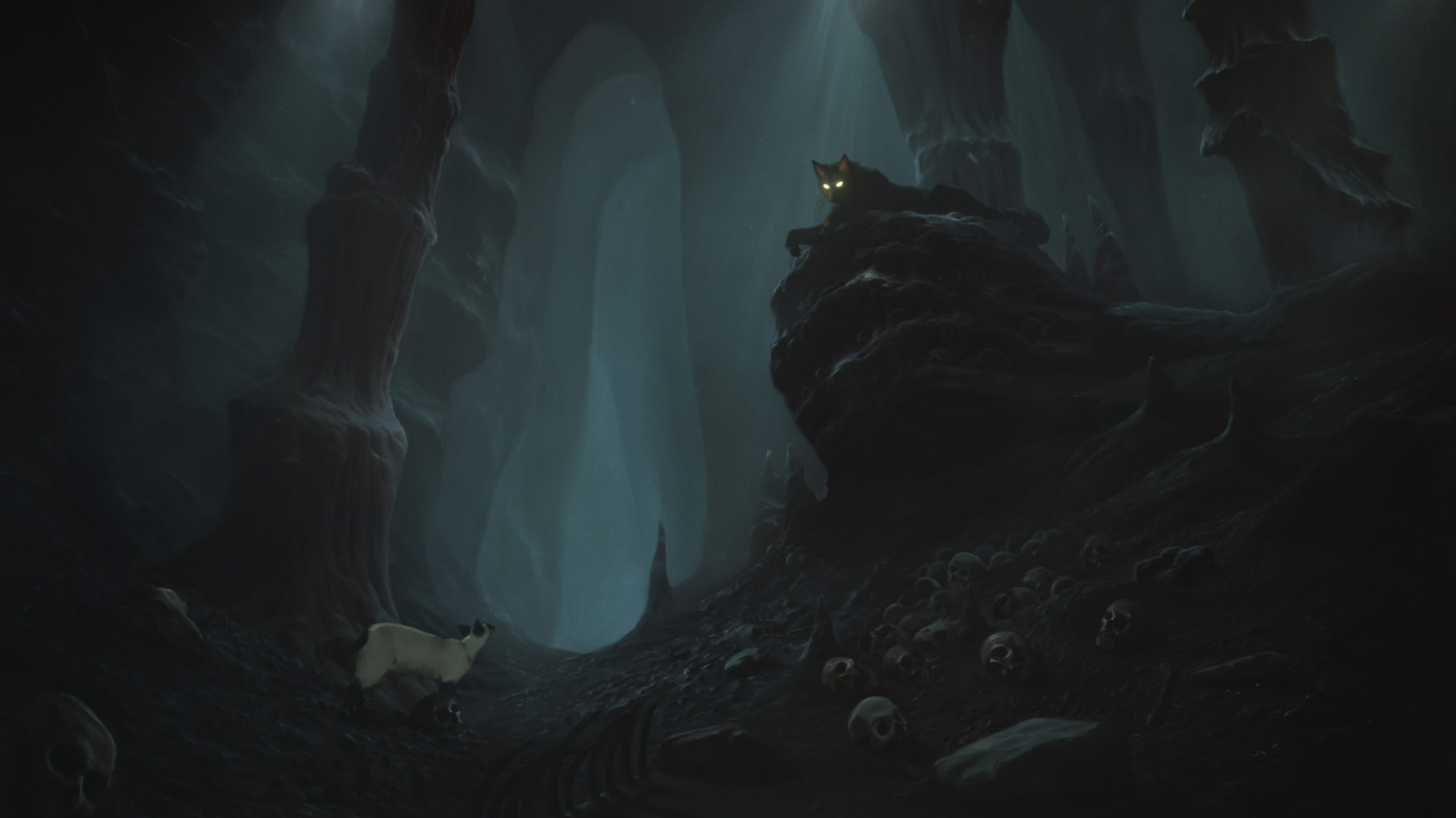
Until Katya and Trixie (of all people), “accidentally” revealed that two extremely well-regarded stories from The Sandman books had apparently been filmed but not released, we thought our recapping of the series was finished until the inevitable second season dropped. Tom had noticed during his first round of recapping that Melissanthi Mahut was listed on IMDB as having been cast to play Calliope, but he figured that was just a sign that season 2 was in the planning stages. When Katya and Trixie showed clips from two heretofore unseen episodes on their Netflix recapping show I Like to Watch, we first thought it might have been a mixup on Netflix’s part, but that seemed increasingly unlikely since no second season has yet been announced and TV shows are not in the habit of scrapping entire filmed storylines. Like many fans, we waited for the announcement of a bonus episode to come. We were pleasantly surprised when that announcement came, along with the reveal that this episode may just be the most star-studded one of the season, with not only Derek Jacobi and Arthur Darville starring, but also featuring the voice talents of Sandra Oh, James McAvoy, David Tennant, and Michael Sheen. They saved the best for last and we’ve got to hand it to Netflix. It’s a brilliant way to keep the interest high on a show at the exact moment it tends to fade in the zeitgeist: two weeks after it drops. In a way, the high quality of this episode feels almost like the show taking a little victory lap as it closes out its first season on a high note. Well. If you can call stories about predators dreaming of our demise or angry gods torturing those who offend them “light.” Still, after the somewhat disappointing second arc of the season, “The Doll’s House,” it’s fantastic to end on such an upswing in quality; one that happens to also prove our assertion that this material only really works in the hands of talented actors. In fact, if you don’t mind, we’d like to take a little victory lap ourselves, because this episode rather neatly encapsulated several themes, motifs, observations and aspects of the narrative that we’ve been pointing out all season. It’s not really a brag, we promise. Any Sandman fan could point the following out to you:
As we noted in our recap of the first episode, when he briefly appeared to Alex Burgess in the form of a black cat, Dream has an affinity for felines. This isn’t the only tale of cats or tales in which Dream appears as a cat in the Sandman collection of stories, but it’s easily the most memorable and significant of them. As we observed in our recap of the second episode, we thought it might be good for the show to explore animation for some of its sequences, since the dream-like quality of its tales didn’t always lend itself to the literal aspects of modern digital effects. We really hope they keep doing this. They should shoot for at least one animated episode or extended sequence each season. Part of what defined The Sandman graphic novels were the wild swings in art styles from story to story. As we noted in our recap of the fourth episode, when his ex-lover Nada perceived him as a Black man, the form of Dream is different depending on who is looking at him, which is part of what makes the cat dream so engrossing. We not only get to see Morpheus through the eyes of cat, but all of the Dreaming, rendered to this angry and grieving predator as a land of bones, carrion birds and mythical creatures barring her way. And as we also noted in that episode’s recap, Dream has an extensive and quite messy romantic history which will be revealed and have significant repercussions in the overall story. All of these important aspects of the story are picked up in this episode and re-affirmed. See? This is why you need an obsessed nerd to walk you through this show.
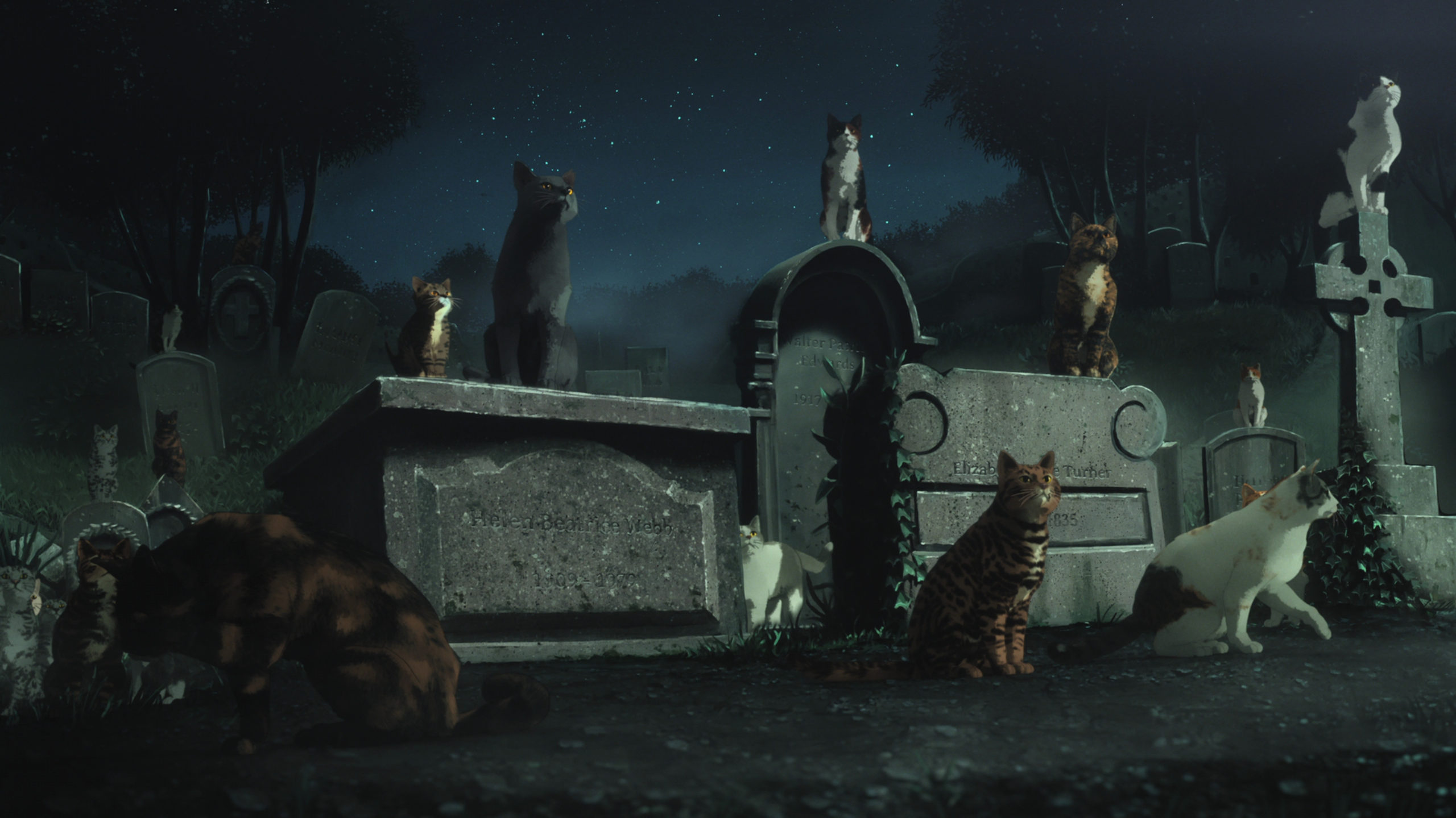
While both of these stories feel like nice little atmospheric one-offs, they each represent significant aspects or revelations of Dream that will play out or become more important as the story progresses. It’s to the credit of screenwriter Catherine Smyth-McMullen that she was able to make a connection between these two tales that wasn’t really evident when they were each published as back to back issues of the original comics. These are the stories of grieving parents and a tale about how inspiration can be wielded as a weapon, which is why Dream is such a powerful being. The Endless tend to embody not only the states for which they are named, but also their opposites: Death illuminates life, Despair creates the need for hope, Desire is the flip side of loathing, and Dream affects reality itself. He does this by inspiring. As the dead crow (voiced charmingly by Neil Gaiman himself) said to the little cat, “Revelation, that is the province of Dream.”
In “A Dream of A Thousand Cats,” we get to see the King of Dreams through the eyes of a non-human and see the universal influence he holds over all sentient beings. A group of cats, hearing a signal that isn’t described or articulated, learn of the news of the coming of a figure called The Prophet. They leave their comfortable homes or hard-fought alleyways to gather in a graveyard at night to hear her tale. It’s a story presumably many of them understand instinctively; a story about giving up their feral natures, their true selves and even their own child – all against their will – to live among the humans who provide service to them.
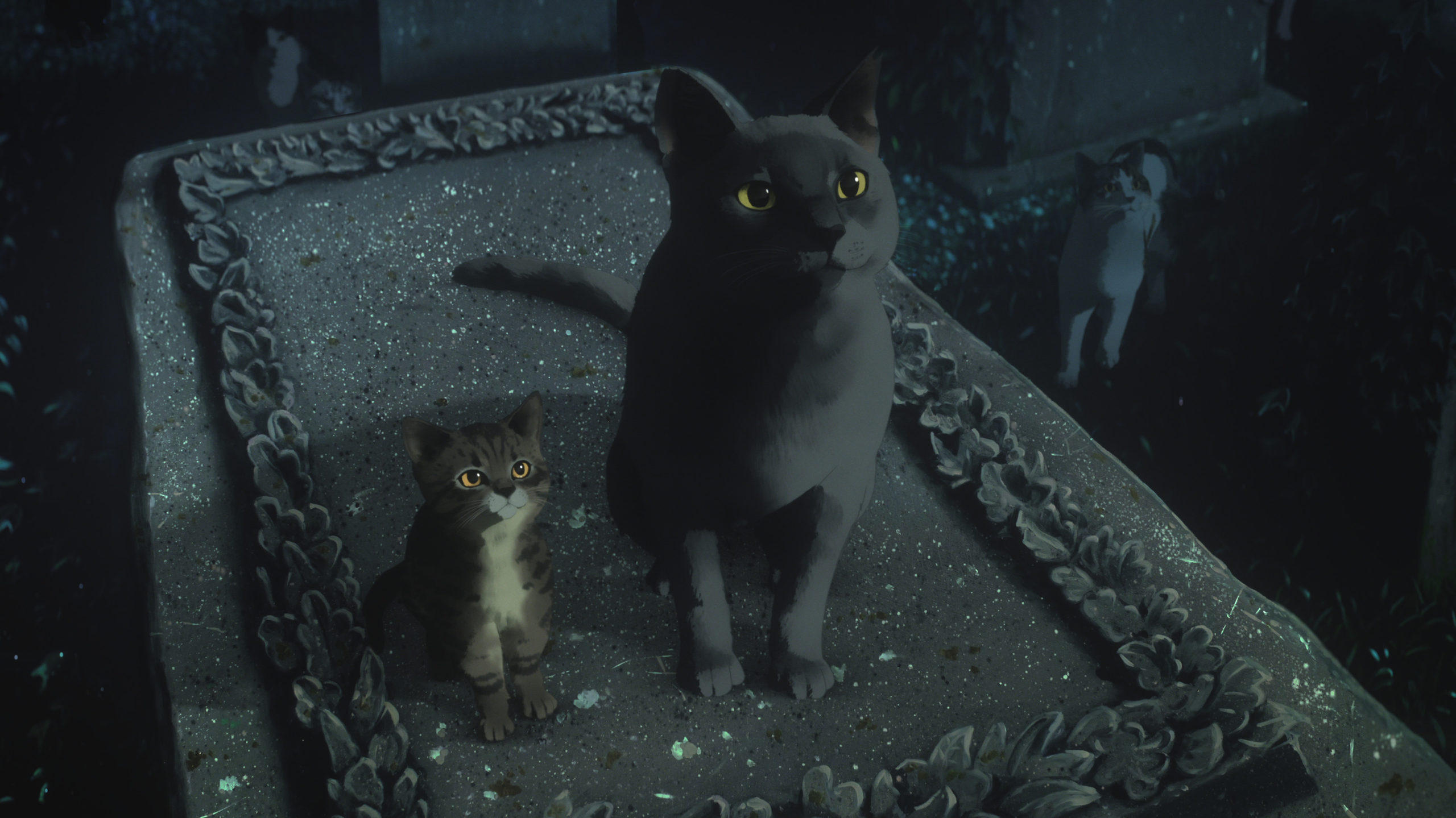
When an angry, grieving mother walks her way into the Dreaming to get the answers she needs, Morpheus does the same thing here he’s no doubt done for countless other prophets, saviors and kings: he inspires the little Siamese cat to dream of a better world for her people. He’s also doing something with her that he rarely does with other dreamers: he gives her a direct answer to her questions. Notice how gentle and kind he is to her, calling her “Little Sister” and honoring her agency and the path that she walked to get there. He hasn’t been shown to treat any other dreamer so respectfully. We can’t even imagine him addressing Rose Walker or Lyta Hall that way. Gaiman never articulates why this is so, but the Dream King loves cats and respects their abilities to walk where they want, to observe their surroundings, and to maintain a high sense of self-possession. We noted in our recap of episode six that you can map extremely basic, archetypal stories in The Sandman, and this one is, like so many others, as old as stories themselves: a mother grieves and seeks answers and justice for her dead children. A god inspires a prophet to lead her people to freedom. These are stories nearly as old as fire. Was there ever really a reality where humans were tiny prey and cats were enormous apex predators? Does it even matter? The point is that Morpheus gave a grieving mother exactly what she needed: a dream of retribution, of hope, of a better world where no one will have to suffer as she did. “We can dream a world where no cat suffers. Where no kittens die, cold and alone,” she pleads with her kind. Not that we think Dream lied to her. To him, all stories are real and happening somewhere in his realm.
We should pause and pay attention to just how beautiful this story looks. “A Dream of a Thousand Cats” was directed by Hisko Hulsing, from animation that began as oil paintings, which gives the episode a richness and depth that traditional computer animation might have lacked. Sandra Oh is wonderful as the Prophet and gives life and clarity to much of Gaiman’s catlike dialogue (“His teeth and claws were sharp as winter,” “I am a walker in the night places,” “I am a cat. I keep my own counsel”). Despite the darkness that launches the tale (be warned that this is the third time this season animals get killed, if you count Gregory the Gargoyle as an animal), it’s a story beautifully told, paying wonderful homage to Gaiman’s original work and even managing to enrich it significantly.
“Calliope” is a story where Gaiman is really in his sweet spot, exploring the darkest of humanity’s impulses while telling a darkly affecting story about creativity, myths, inspirations, and two ex-lovers who haven’t seen each other in a long time, reaching out because they finally understand each other’s pain. It’s also Gaiman’s favorite story to tell; the one about what happens when a myth winds up stuck in the real world and how devastating it can be when ancient beings and all-too-flawed humans get tangled up in each other’s business. By this point in the books (these were the 17th and 18th issues), Gaiman really had his feet under him and you can bet that everything he reveals or focuses on from here on out has a point to the overall story. Here we find out for the first time that not only did the King of Dreams have a wife, but he also had a very famous son as well. “That boy-child who went to Hades for his lady-love and died in Thrace, torn apart for his sacrilege,” as the Crone puts it. We’d tell you to put a pin in that, but it’s not like the story of Orpheus and Eurydice is an obscure one. Suffice it to say it will come up again someday.
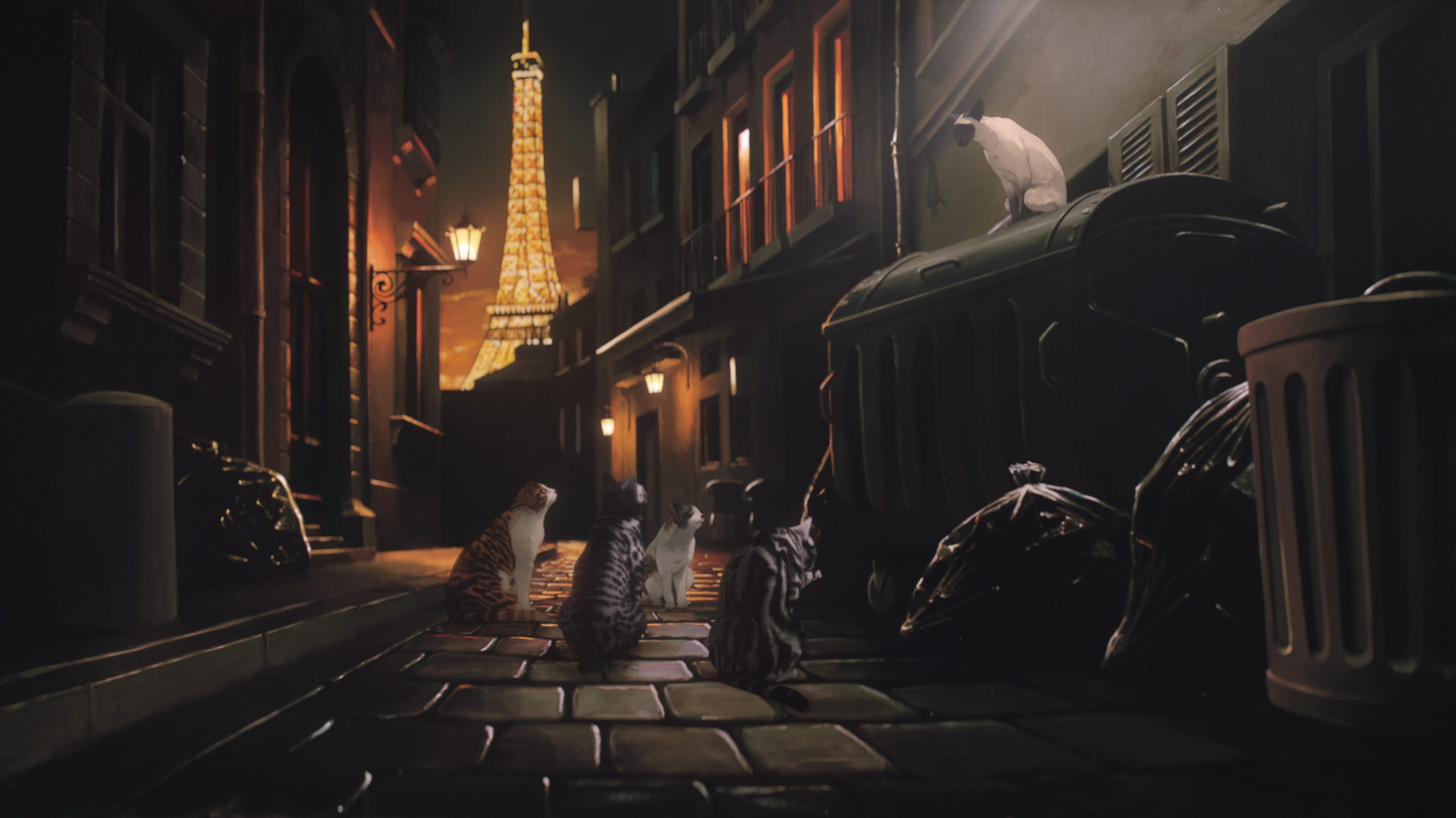
Of all the pantheons, Dream has a distinct and familial attachment to the gods of ancient Greece, which should partially explain why the Three-In-One keep showing up. These are not, however The Fates as we saw them when Morpheus called them or when they appeared to John Burgess and Rose Walker to alert them to their paths and endings. These are the Elder Muses, portrayed here as the mothers of the nine Olympian Muses. It is SUCH a good idea to have the same three actresses play them. The Three-In-One will appear in many of their aspects (they’ve already been referred to as The Hecate, The Fates and now the Mother Muses, but they’ve also mentioned The Furies in passing) before this story is over and while each maiden/mother/crone construct is composed of overlapping and distinct figures in mythology, by casting the same actresses, it underlines a theme of all stories being one primal story; of characters and themes and images that repeat like motifs. You can contrast the Three-In-One appearance here with how much darker and sinister they appear as The Fates, when they swallowed snakes whole or brought down thunder and lightning when annoyed. Even the Crone speaks softly and with empathy to Calliope. These are the same figures but also different ones; their edges and distinctions blurred and rubbed off after millennia of being a story told and retold. But we’re getting ahead of ourselves here.
“Calliope” isn’t just the story of the famous muse of mythology; it’s also the story of the flawed human men who captured her, exploited her, and raped her. We meet the wonderful Derek Jacobi as the not so wonderful Erasmus Fry, a clearly very successful author at one time, now a bitter old man whose stamina has left him and whose stories are fading in memory. Visiting the once famed author is another faded talent, Richard Madoc, played by Arthur Darvill, who has run into an epic case of writer’s block after publishing his first novel to critical acclaim several years ago. As an aside – and it truly is an aside – we love Erasmus Fry’s inexplicable fascination with the trichino-bezoar, which is never really explained. While he gives his impromptu lecture on the history and provenance of the disgusting artifact, he references the compulsive disorder of eating one’s own hair, which he accurately calls “the Rapunzel Syndrome.” It’s a tiny little detail and could easily be considered just a little bit of darkly weird flavor to the tale, but it’s not a coincidence that he referenced a classic fairy tale in explaining it. It underlines how stories – old, often-told stories – define every possible aspect of the human condition.
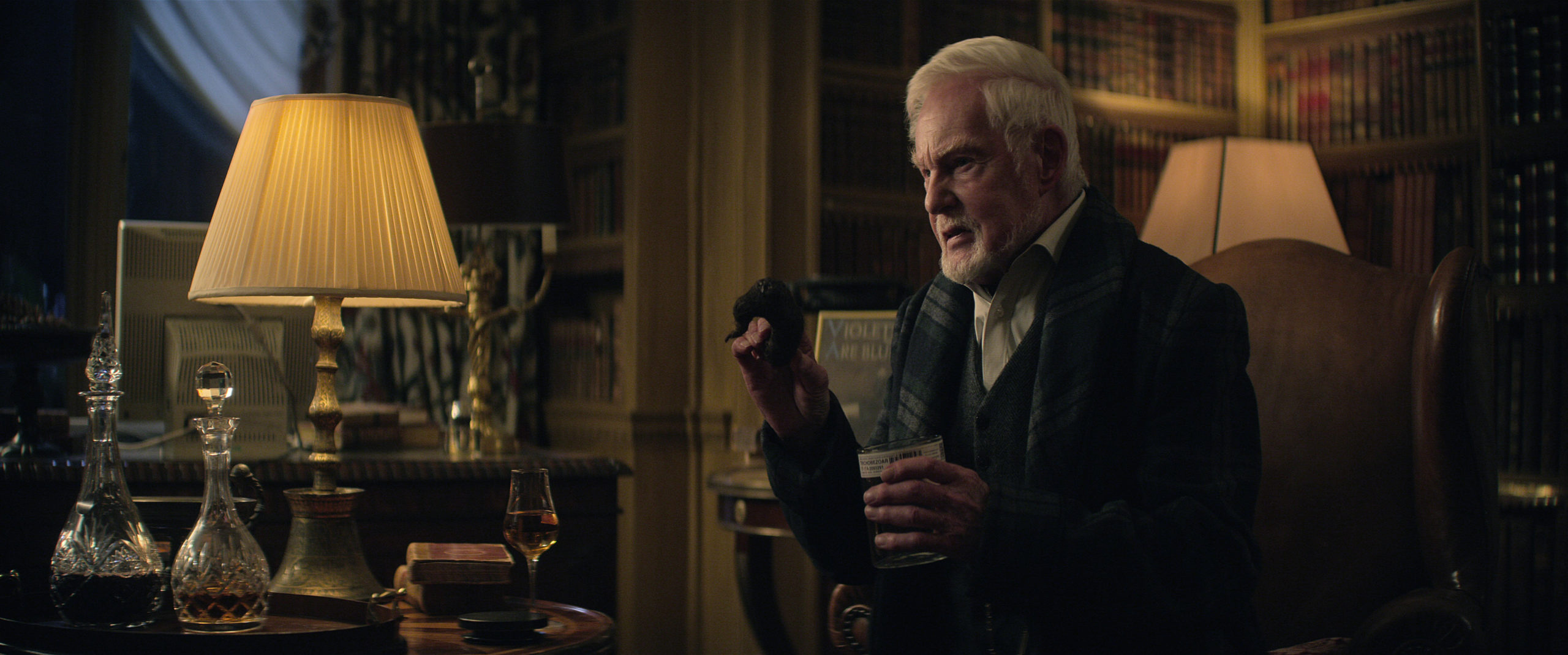
Gaiman used this story to explore creativity and inspiration, the horror of writer’s block, and the astounding pretension that permeates the literary class, all topics of which he was already quite familiar when he wrote this. “Writers are liars,” Erasmus tells Calliope when he breaks his promise to her. Writers, according to Gaiman here, are also long-winded, self-important, delusional hypocrites obsessed with how they are perceived. Darvill is very good at playing creeps and assholes who think they’re nice guys. He’s perfect as Madoc. “You think I’m free?” he whines to the captured goddess after she explained the horror of sixty years of captivity, going on to whine about his writer’s block and book advance, as if they’re the same thing as her suffering. Louise Hooper, who directed this episode, wisely chose not to depict Calliope’s rapes, which the book made quite clear and relatively graphic. In the original, Richard takes her home and immediately rapes her, without hesitation. We think this version, where he attempts to woo her and comes to his role as her abuser with a feigned reluctance, is actually far more powerful. Madoc wants to believe that he’s not the kind of man who would do such a thing, pretending to be revulsed by Fry’s parting suggestion on how to treat her: “They say one ought to woo her kind, but I must say I found force most efficacious.” When his agent threatens to drop him if he doesn’t produce his contracted second novel, Richard drops the act of self-delusion and does what he always intended to do. We should note two things here. First, that Calliope makes it perfectly clear that what he’s doing is a violation of her gifts, which are hers to bestow to whom she chooses, not something that should be violently taken from her. And second, that Melissanthi Mahut is really wonderful in the role. She not only plays the captured goddess’s fragility, pain, and regret, but also her anger, her age, and her desperation. Inspiration strikes Richard immediately and from there, it’s practically a montage of success: swanky book parties (“I do tend to regard myself as a feminist writer,” he tells one female fan of his work), movie deals (“I need them to guarantee at the outset that the crew is made up of at least 50% women!”) and interviews where he name drops Shirley Jackson, Margaret Atwood and Octavia Butler as his influences, presenting himself as a nice guy and sensitive artist in between raping the woman locked up in his house.
The Elder Muses tell Calliope that the gods can’t help her and that her ex-husband is also being held captive by mortals. Later, she reads a news story about Unity Kinkaid waking up from her sleeping sickness and deduces that her ex is free again. The bit about her writing Morpheus’ name down and then saying it out loud comes from the Rose and Jed Walker storyline, although it wasn’t used in those episodes. It speaks of how the King of Stories can be summoned by word and by voice, the two most basic methods of telling stories. They somewhat softened Dream’s response to the news of his ex-wife’s captivity for this telling. He has more concern for her than he did in the books, although we were happy to see they didn’t shy away from showing how much of his affrontery was coming from his own ego. Still, there’s a tenderness here he didn’t show to her the first time this was told. His confrontation and subsequent punishment to Richard – now Ric – is thrillingly furious and righteous. Gaiman – and Smyth-McMullen – let the story go darkly vengeful at exactly the moment when the reader wants to see some payment levied. Dream overwhelms Ric with so much inspiration that it inspires the manic episode to end all manic episodes, as the author/abuser wears his fingers bloody trying to scrawl every idea – most of which sounded like nonsense of no worth, to be honest – on the nearest surface, in a frantic attempt to get them out of his head.
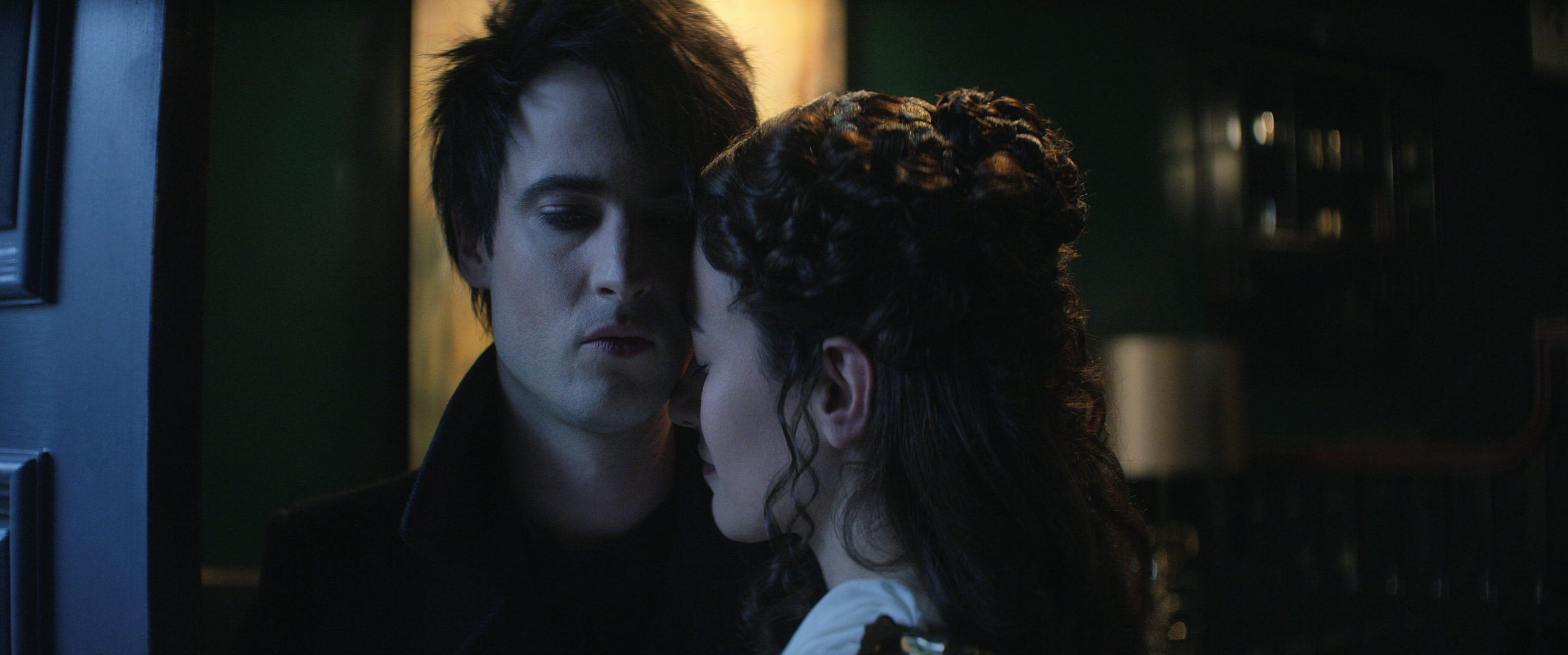
Notice how Calliope returns to her goddess form after she is freed, the same way Dream’s appearance changed after he returned to the Dreaming. These laws and binding circles that kept them imprisoned did so by keeping them from their power, which is expressed in their form. They’re ideas and wave patterns as much as they are beings. But they also have emotions that are all too recognizably human and both Tom Sturridge and Melissanthi Mahut played this scene beautifully; their pain and regret evidence of whatever love they once had, but time and age and even captivity isn’t enough for them to truly reconcile over it. Like the “A Dream of a Thousand Cats,” “Calliope” is partly the story of grieving parents and scars that won’t heal. As Lorenzo, the Sandman newbie noted with wonder by the end of this episode, it’s amazing just how many directions this story is capable of going. And as Tom, the Sandman obsessive replied, that’s the enormous appeal of it and it’s why the book’s fans have been waiting so long for a filmed adaptation. The first two arcs of this season barely scratched where this story can and will go. These episodes make a wonderful coda by hinting out how big and broad and deep a tale it is that we’re falling into.
Gucci Run Sneakers Capsule Collection Next Post:
THE SANDMAN Star Kirby Howell-Baptiste in Wiederhoeft on JIMMY KIMMEL LIVE!
Please review our Community Guidelines before posting a comment. Thank you!



